Did you know that there are more than 100 different types of broccoli? From the familiar heading broccoli to unique varieties like broccolini and Romanesco broccoli, the world of broccoli offers a remarkable range of options.
In this comprehensive guide, I will take you on a journey through the diverse classifications of broccoli, uncovering their distinct characteristics and flavors. Whether you’re a seasoned broccoli enthusiast or just starting your culinary exploration, you’re sure to discover something new and exciting about this versatile vegetable.
Key Takeaways:
- Broccoli comes in more than 100 different varieties.
- Each type of broccoli has its own unique characteristics and flavors.
- From broccolini to Romanesco broccoli, the options are diverse.
- Understanding different types of broccoli allows for a variety of culinary experiences.
- Explore the world of broccoli and discover your favorite varieties.
Broccolini
Broccolini is a tasty and versatile vegetable that is a cross between broccoli and Chinese broccoli. It has small florets and a subtle and sweet flavor that is less bitter compared to regular broccoli. What makes broccolini stand out is its long, slender stalks and delicate appearance. This vegetable is not only delicious but also visually appealing, making it a popular choice for both home cooks and professional chefs.
Broccolini is relatively easy to grow and can be a rewarding addition to your garden. With proper care and attention, you can enjoy a bountiful harvest of this delectable vegetable. The plants typically take 60 to 90 days to mature, depending on the variety.
Some popular broccolini varieties include:
- ‘Apollo’
- ‘Aspabroc’
These varieties are known for their excellent flavor and uniform appearance. Whether you’re sautéing, roasting, or stir-frying, these broccolini varieties will add a delightful touch to your recipes.
To give you a visual idea of the characteristics and varieties of broccolini, here is a table:
| Type | Description | Harvest Time |
|---|---|---|
| ‘Apollo’ | A popular broccolini variety with long, slender stalks and small florets. | 60-70 days |
| ‘Aspabroc’ | An excellent broccolini variety that features long stalks and tender florets. | 60-90 days |
As you can see, broccolini offers a variety of options when it comes to its appearance and taste. Experimenting with different broccolini varieties can enhance your culinary creations and add diversity to your meals.
“Broccolini is a delightful vegetable that combines the best qualities of both broccoli and Chinese broccoli. Its tender florets and slender stalks make it a versatile ingredient in various dishes.” – Broccolini enthusiast
Whether you’re a gardening enthusiast or a food lover, growing broccolini can be a rewarding experience. The next section will explore Chinese broccoli, another exciting type of broccoli that you can add to your garden and plate.
Chinese Broccoli
Chinese broccoli, also known as Chinese kale, is a delicious and nutritious vegetable that adds a unique flavor to dishes. With its large leaves and robust stems, Chinese broccoli is a popular choice for stir-fries and steamed dishes. It has a slightly bitter and earthy taste, which pairs well with savory sauces and seasonings.
When it comes to growing Chinese broccoli, there are several varieties to choose from. Two popular options are ‘Gai Lan’ and ‘Kailaan’. These varieties are known for their tender leaves and thick stems, making them ideal for cooking. Chinese broccoli plants typically take about 60 to 100 days to mature, depending on the variety and growing conditions.
Benefits of Chinese Broccoli
Chinese broccoli is not only delicious but also highly nutritious. It is a good source of vitamins A and C, as well as fiber and calcium. Additionally, it contains antioxidants that can help support overall health and well-being.
Chinese broccoli is a powerhouse of nutrients, providing a range of vitamins and minerals that contribute to a healthy diet. Its slightly bitter flavor adds depth to dishes and makes it a versatile ingredient in many Asian cuisines.
To grow Chinese broccoli, start by preparing a well-draining soil enriched with organic matter. Sow the seeds directly into the garden or start them indoors and transplant them when they are about six weeks old. Give the plants plenty of sunlight and water regularly to keep the soil consistently moist.
Tip: Chinese broccoli grows best in cool temperatures, so it is ideal to plant it in the early spring or fall.
Harvest Chinese broccoli when the leaves are large and the stems are thick. Cut the stems at an angle to make harvesting easier and to encourage regrowth. The leaves and stalks can be used in a variety of dishes, including stir-fries, soups, and salads.
Romanesco Broccoli
Romanesco broccoli is a unique and visually stunning variety of broccoli that stands out with its distinct geometric heads. Its mesmerizing appearance, resembling a fractal pattern, adds an artistic touch to any plate. But this vegetable is not just about looks; it also offers a delicious taste that is similar to other sprouting broccoli types.
Growing Romanesco broccoli can be a rewarding experience for any gardener. Like other broccoli varieties, it thrives in cooler temperatures and should be planted in early spring or late summer. With proper care and maintenance, you can enjoy a bountiful harvest of this captivating vegetable in approximately 60 to 100 days, depending on the specific variety.
Some popular types of Romanesco broccoli include ‘Veronica’ and ‘Romanesco Italia’. These varieties are known for their vibrant green heads and excellent flavor profile.
Here is a detailed table highlighting different varieties of Romanesco broccoli:
| Variety | Description |
|---|---|
| Veronica | A beautiful variety with vivid green heads and a delicate, nutty flavor. |
| Romanesco Italia | A popular Italian variety featuring pale green heads and a mild, slightly sweet taste. |
| [insert variety name] | [insert description] |
With its intriguing appearance and delightful taste, Romanesco broccoli is an excellent addition to salads, stir-fries, or as a side dish. Its crunchy texture and unique flavor make it a favorite among broccoli enthusiasts and food lovers alike.
Sprouting/Heading Broccoli Cultivars
Sprouting/heading broccoli cultivars are the most common types of broccoli. These varieties are known for their tight, compact heads and are a popular choice among broccoli lovers. They come in a range of sizes and colors, offering a diverse selection for gardeners and consumers.
One of the main characteristics of sprouting/heading broccoli cultivars is their firm and compact florets, which make them ideal for various culinary applications. Whether you’re steaming, sautéing, roasting, or adding them to stir-fries, these broccoli cultivars provide a satisfying crunch and a rich, earthy flavor.
Here are some popular sprouting/heading broccoli cultivars:
- Calabrese: This classic Italian variety features dark green heads and is known for its great taste and versatility in cooking. It is a prolific producer and can be harvested over an extended period.
- Italian Green Sprouting: As the name suggests, this cultivar produces beautiful green heads with tender florets. It has a slightly sweeter flavor compared to other sprouting/heading broccoli varieties.
- Purple Sprouting: Known for its vibrant purple color, this cultivar adds a pop of color to your dishes. It has a delicious earthy flavor and is rich in antioxidants.
- Tendergreen: This variety is prized for its tender stems and mild flavor. It is an early maturing cultivar, making it a great choice for those who want to enjoy fresh broccoli early in the growing season.
These sprouting/heading broccoli cultivars can be easily grown in home gardens or obtained from local farmers’ markets. Their versatility and delicious taste make them a favorite among broccoli enthusiasts.
Now that we’ve explored the different types of broccoli, including broccolini, Chinese broccoli, Romanesco broccoli, and sprouting/heading broccoli cultivars, it’s clear that broccoli offers a wide range of options for every palate. Next, let’s discuss the various regions where broccoli is grown and its seasonality.
Broccoli Growing Regions and Seasonality
Broccoli is a cool season vegetable that thrives in regions with mild and temperate climates. To understand the broccoli growing regions and seasonality, let’s take a closer look at where broccoli is grown and when it is harvested.
Broccoli Growing Regions
In the United States, major broccoli-growing regions are concentrated in California, Arizona, Texas, and Oregon. California, particularly the Salinas Valley and Central Coast, is known for its extensive broccoli production. These regions provide the ideal combination of climate, soil conditions, and farming expertise to support thriving broccoli crops.
Internationally, countries like China, India, Italy, and Spain are prominent broccoli producers. These regions have favorable growing conditions and a long-standing tradition of cultivating this nutritious vegetable.
Broccoli Seasonality
The availability of broccoli varies by region and climatic conditions. In general, broccoli is considered a cool season vegetable and performs best during moderate temperatures. It can tolerate light frosts, making it suitable for early spring and fall cultivation.
Understanding the seasonality of broccoli can help plan successful cultivation and ensure a bountiful harvest. Different regions may experience peak harvest times at different points in the year due to variations in climate and planting schedules. By aligning planting times with the optimal season, farmers can maximize yields and produce high-quality broccoli.
To maintain a steady supply of broccoli throughout the year, farmers often practice staggered planting in different growing regions. This allows for continuous production and availability of the vegetable in various markets.
When is Broccoli Harvested?
Broccoli is typically harvested when the heads are firm, compact, and fully developed but before the yellow flowers start to open. The timing of broccoli harvest depends on various factors, including the specific variety, growing conditions, and desired head size.
Harvesting broccoli at the right stage ensures optimal flavor, texture, and nutrient content. It is important to closely monitor the heads and harvest them promptly to avoid overripe or underdeveloped broccoli.
Additionally, after the main head is harvested, some broccoli varieties have the ability to produce smaller side shoots. These can be harvested as well, extending the harvesting period and allowing for a more prolonged supply of fresh broccoli.
The Nutritional Benefits of Broccoli
Broccoli is a highly nutritious vegetable that offers a range of health benefits. Its abundance of essential vitamins, minerals, and antioxidants makes it an excellent addition to a well-balanced diet. Let’s explore the nutritional powerhouse that is broccoli.
Broccoli Nutrition
Broccoli is packed with essential vitamins and minerals that support overall health and well-being. Here’s a breakdown of the key nutrients found in broccoli:
| Nutrient | Amount per 100g |
|---|---|
| Vitamin C | 89.2 mg |
| Vitamin K | 101.6 mcg |
| Folate | 63 mcg |
| Fiber | 2.6 g |
Broccoli is particularly rich in vitamin C, which plays a crucial role in supporting the immune system and promoting collagen production. Vitamin K is essential for blood clotting and bone health, while folate supports cell growth and development. The fiber content in broccoli aids digestion and contributes to a healthy gut.
Health Benefits of Broccoli
The nutritional profile of broccoli translates into numerous health benefits. Here are some of the ways broccoli can contribute to your well-being:
- Supports immune function: The high vitamin C content in broccoli helps strengthen the immune system, reducing the risk of infections and diseases.
- Promotes heart health: The fiber, potassium, and antioxidants in broccoli work together to support a healthy cardiovascular system and lower the risk of heart disease.
- Boosts bone health: Vitamin K, calcium, and other minerals present in broccoli contribute to strong bones and reduce the risk of osteoporosis.
- Supports digestion: The fiber content in broccoli aids in maintaining a healthy digestive system and preventing constipation.
- Protects against chronic diseases: The antioxidants in broccoli, such as sulforaphane, may help reduce the risk of certain cancers and protect against chronic inflammation.
With its low calorie and fat content, broccoli is an excellent choice for weight management and overall health maintenance. Its nutritional value and health benefits make it a versatile and valuable addition to any meal.
Broccoli Planting and Care Tips
If you’re looking to grow your own broccoli, follow these planting and care tips for a successful harvest. With the right techniques and attention, you’ll be enjoying fresh, homegrown broccoli in no time.
Choosing the Right Soil
Broccoli prefers fertile, well-drained soil. Before planting, prepare the soil by adding compost or organic matter to improve its nutrient content and drainage. Aim for a pH level between 6.0 and 7.0, which is slightly acidic to neutral.
Planting Time
For a successful broccoli crop, timing is crucial. Broccoli should be planted 2-3 weeks before the last frost in the spring. This allows the plants to establish roots before the warmer weather sets in. It’s also important to choose the right broccoli variety that suits your local climate and planting season.
Spacing and Sunlight
When planting broccoli, provide adequate spacing between plants to allow for proper air circulation and room for growth. Ideally, space the plants about 18-24 inches apart in rows that are 24-36 inches apart. Broccoli thrives in full sun, so choose a location in your garden that receives at least 6-8 hours of direct sunlight per day.
Watering and Mulching
Regular watering is essential for maintaining healthy broccoli plants. Keep the soil evenly moist, but not waterlogged. Avoid overhead watering to prevent fungal diseases. Applying a layer of organic mulch around the plants helps retain moisture, suppress weeds, and regulate soil temperature.
Harvesting Time
Knowing when to harvest your broccoli is key to enjoying the best flavor and texture. Harvesting should be done when the heads are large and compact, but before the flower buds start to open. Cut the main head with a 6-inch stem and leave the plants to allow for secondary side shoots to develop.
Fertilizing for Side Shoots
To encourage the development of side shoots after harvesting the main head, apply additional nitrogen fertilizer to the soil. This will help the plants continue to produce smaller, tender florets that can be harvested over an extended period of time.
By following these planting and care tips, you’ll be rewarded with a bountiful harvest of nutritious and delicious broccoli.
| Planting and Care Tips | Benefits |
|---|---|
| Choose fertile, well-drained soil | Aids in proper nutrient absorption |
| Plant 2-3 weeks before the last frost | Establishes roots before warmer weather |
| Provide adequate spacing and sunlight | Promotes proper growth and development |
| Water regularly and mulch | Maintains soil moisture and suppresses weeds |
| Harvest when heads are compact | Ensures optimal flavor and texture |
| Apply additional nitrogen fertilizer | Encourages side shoot production |
Common Problems and Pests in Broccoli Cultivation
While broccoli is a resilient and nutritious vegetable, it can face challenges when it comes to pests and diseases. Understanding these common issues and implementing appropriate measures can help you maintain a healthy broccoli crop.
Pests: Broccoli plants are susceptible to a range of pests that can hinder their growth and yield. Two common pests that affect broccoli are aphids and cabbage worms.
Aphids: Aphids are small insects that feed on the sap from broccoli plants, causing stunted growth and deformed leaves. These tiny pests can reproduce quickly, leading to infestations if not controlled.
Cabbage Worms: Cabbage worms are the larvae of cabbage white butterflies. They chew on the leaves and heads of broccoli plants, causing significant damage. These green caterpillars can be identified by their characteristic looping movement.
Proper pest control measures are crucial to managing these broccoli pests effectively. Here are a few strategies:
- Row Covers: Using row covers can help prevent aphids and cabbage worms from reaching your broccoli plants. Row covers are lightweight fabric covers that allow sunlight and water through while keeping pests out. They should be placed over the plants soon after transplanting.
- Insecticidal Soaps: Insecticidal soaps, made from natural ingredients, can be used to control aphids and cabbage worms. These soaps suffocate the pests upon contact and are safe to use on edible crops. Make sure to follow the instructions on the product label.
- Insecticides: If the infestation is severe or other methods aren’t effective, you may need to resort to chemical insecticides. It’s important to choose a product labeled specifically for use on broccoli and carefully follow the instructions to minimize harm to beneficial insects and the environment.
Diseases: In addition to pests, broccoli plants can also be affected by various diseases. One common disease is alternaria leaf spot.
Alternaria Leaf Spot: Alternaria leaf spot is a fungal disease that causes dark, sunken lesions on the leaves of broccoli plants. The disease can spread rapidly, leading to defoliation and reduced plant vigor.
Preventing disease outbreaks starts with good sanitation practices and careful monitoring of your plants. Here are some tips to manage diseases in your broccoli crop:
- Crop Rotation: Avoid planting broccoli or other brassica crops in the same area for consecutive growing seasons. Crop rotation helps break the disease cycle and reduces the likelihood of pathogens persisting in the soil.
- Sanitation: Remove and destroy any infected plant material to prevent the spread of diseases. This includes removing and disposing of infected leaves, stalks, and heads.
- Fungicides: In severe cases, fungicides may be necessary to control diseases. Consult with a local garden center or extension service for approved fungicides and application guidelines.
By taking proactive measures to manage pests and diseases, you can ensure the success of your broccoli crop and enjoy a bountiful harvest.
Common Broccoli Pests and Diseases
| Pest/Disease | Description | Control Measures |
|---|---|---|
| Aphids | Tiny insects that feed on sap, causing stunted growth and deformed leaves | Row covers, insecticidal soaps, insecticides |
| Cabbage Worms | Larvae of cabbage white butterflies that chew on leaves and heads | Row covers, insecticidal soaps, insecticides |
| Alternaria Leaf Spot | Fungal disease causing dark, sunken lesions on leaves | Crop rotation, sanitation, fungicides |
How to Harvest and Store Broccoli
Harvesting broccoli at the right time ensures the best flavor and texture. It’s important to pick the heads when they are compact and before the flower buds open. To harvest broccoli, use a sharp knife or shears to cut the heads with about a 6-inch stem. This allows for easy handling and prevents damage to the plant.
“Harvest the heads when they are compact and before the flower buds open.”
After harvesting the main head, don’t remove the plant entirely. Broccoli plants have the ability to produce smaller side shoots, also known as florets, that can be harvested as well. These side shoots offer continuous harvests and allow you to enjoy broccoli for a longer period.
How to Store Broccoli
Proper storage is essential to maintain the freshness and quality of harvested broccoli. Here are some tips on how to store broccoli:
- Before storing, remove any excess moisture from the heads and leaves. Excess moisture can cause spoilage and deterioration.
- Wrap the broccoli heads loosely in a damp paper towel or cloth to help retain moisture.
- Place the wrapped heads in a perforated plastic bag to allow for good air circulation. Alternatively, you can store them in the vegetable crisper section of the refrigerator.
- Set the refrigerator temperature to around 32°F (0°C) and maintain a humidity level of approximately 95%. These conditions help prolong the shelf life of broccoli.
- Broccoli can typically be stored for 1-2 weeks under these conditions.
By following these storage guidelines, you can enjoy fresh and flavorful broccoli even after harvesting.
| Storage Tips | Duration |
|---|---|
| Wrap heads in a damp paper towel or cloth | 1-2 weeks |
| Place in a perforated plastic bag | |
| Refrigerate at 32°F (0°C) with 95% humidity |
Storing broccoli properly helps preserve its flavor, texture, and nutritional value. Whether you’re growing broccoli in your garden or purchasing it from the store, these storage tips will ensure that you have fresh and delicious broccoli on hand whenever you need it.
Conclusion
In conclusion, exploring the various types of broccoli can open up a world of flavors and options for your meals. From the delicate sweetness of broccolini to the robust and bitter taste of Chinese broccoli, each variety offers its own unique experience. Romanesco broccoli stands out with its striking spiral heads, while the sprouting/heading broccoli cultivars provide a classic and familiar choice.
By learning about the different types of broccoli and how to grow and care for them, you can cultivate a garden full of diversity and enjoy a variety of broccoli on your plate. Whether you prefer the tender stalks of broccolini or the hearty appeal of sprouting broccoli, there is something to suit every palate.
So, why limit yourself to just one type of broccoli? Embrace the world of possibilities and discover the flavors and textures that each type has to offer. From stir-fries to salads and beyond, the versatility of broccoli will surely elevate your culinary creations. Start exploring the different types of broccoli and embark on a delicious journey of taste, nutrition, and variety.

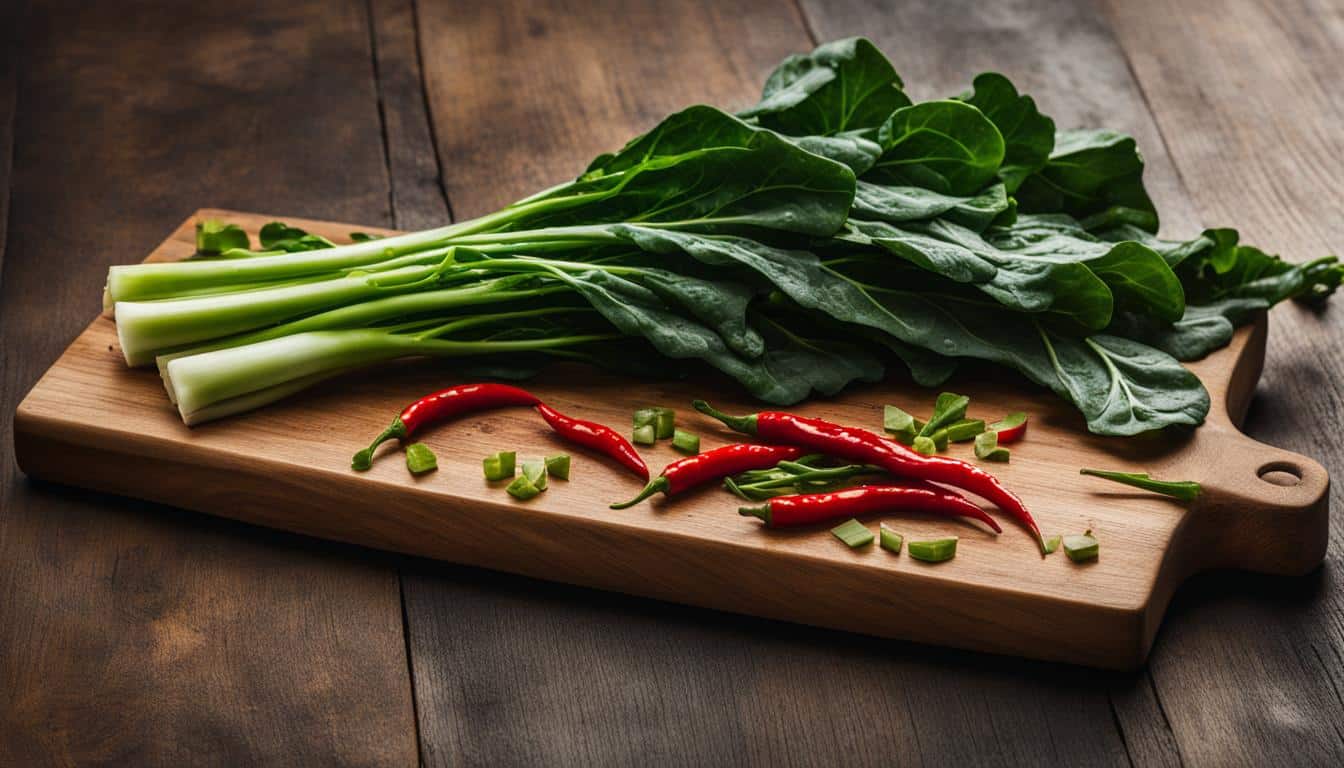
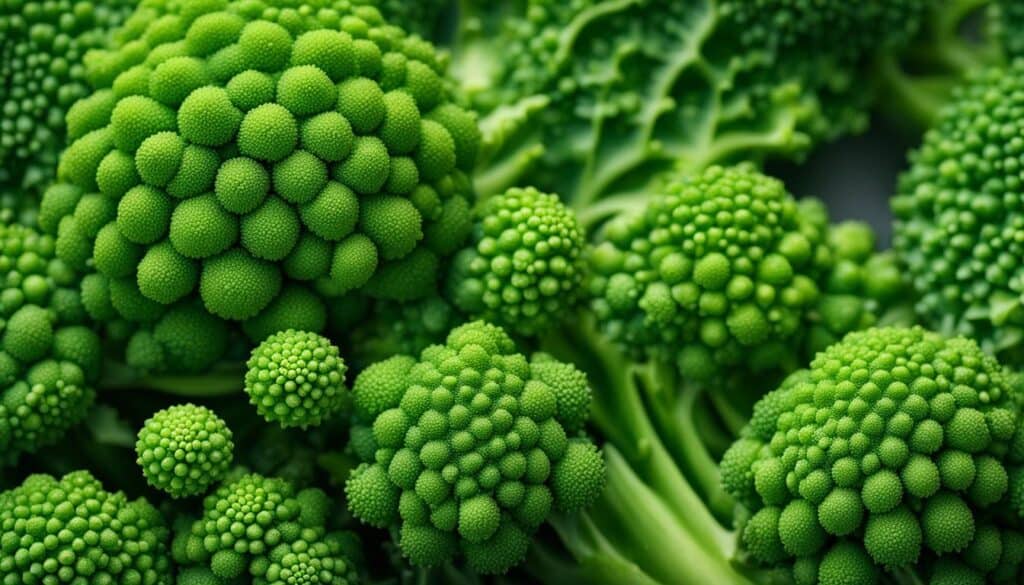
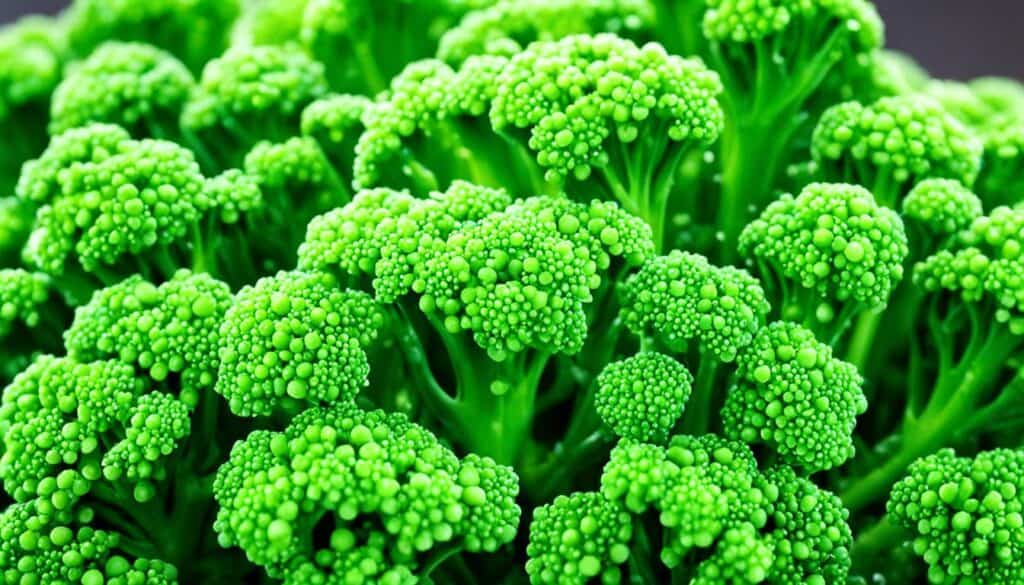
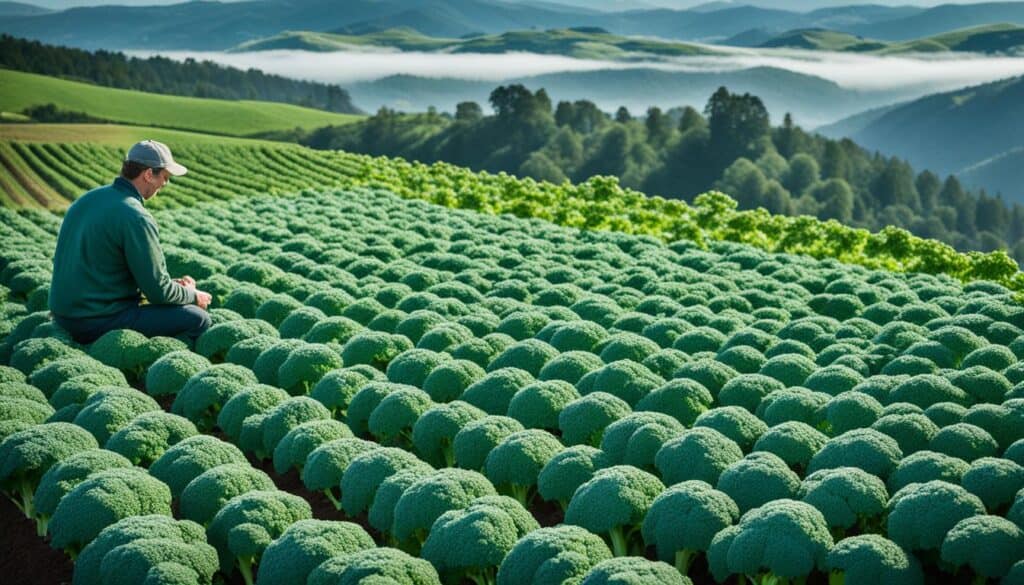
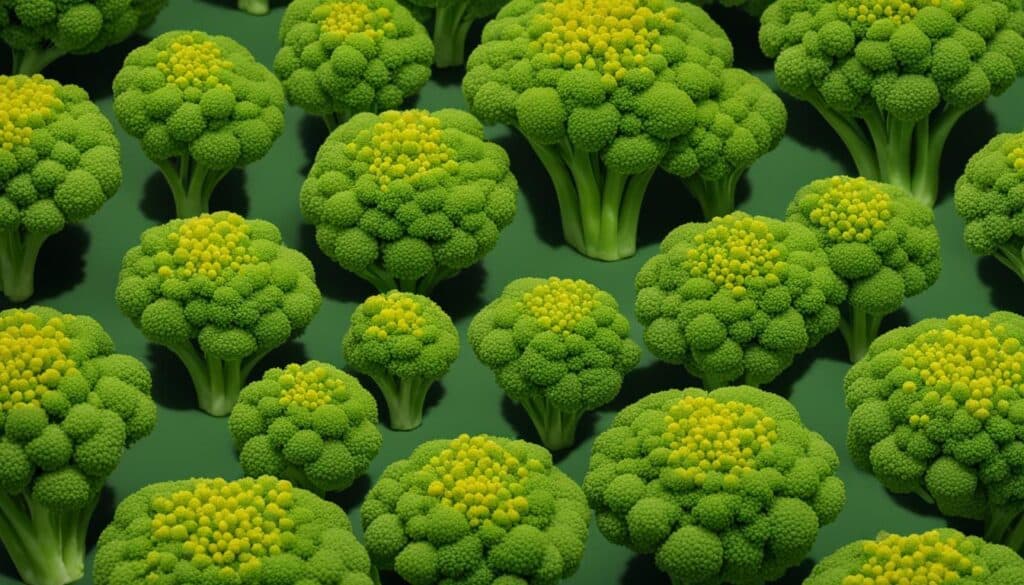
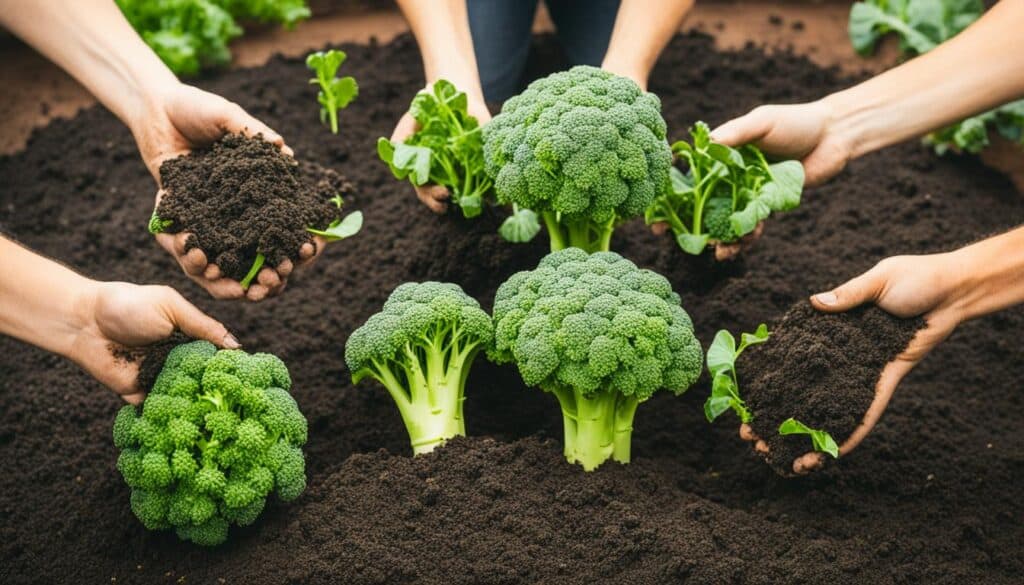



Leave a Reply